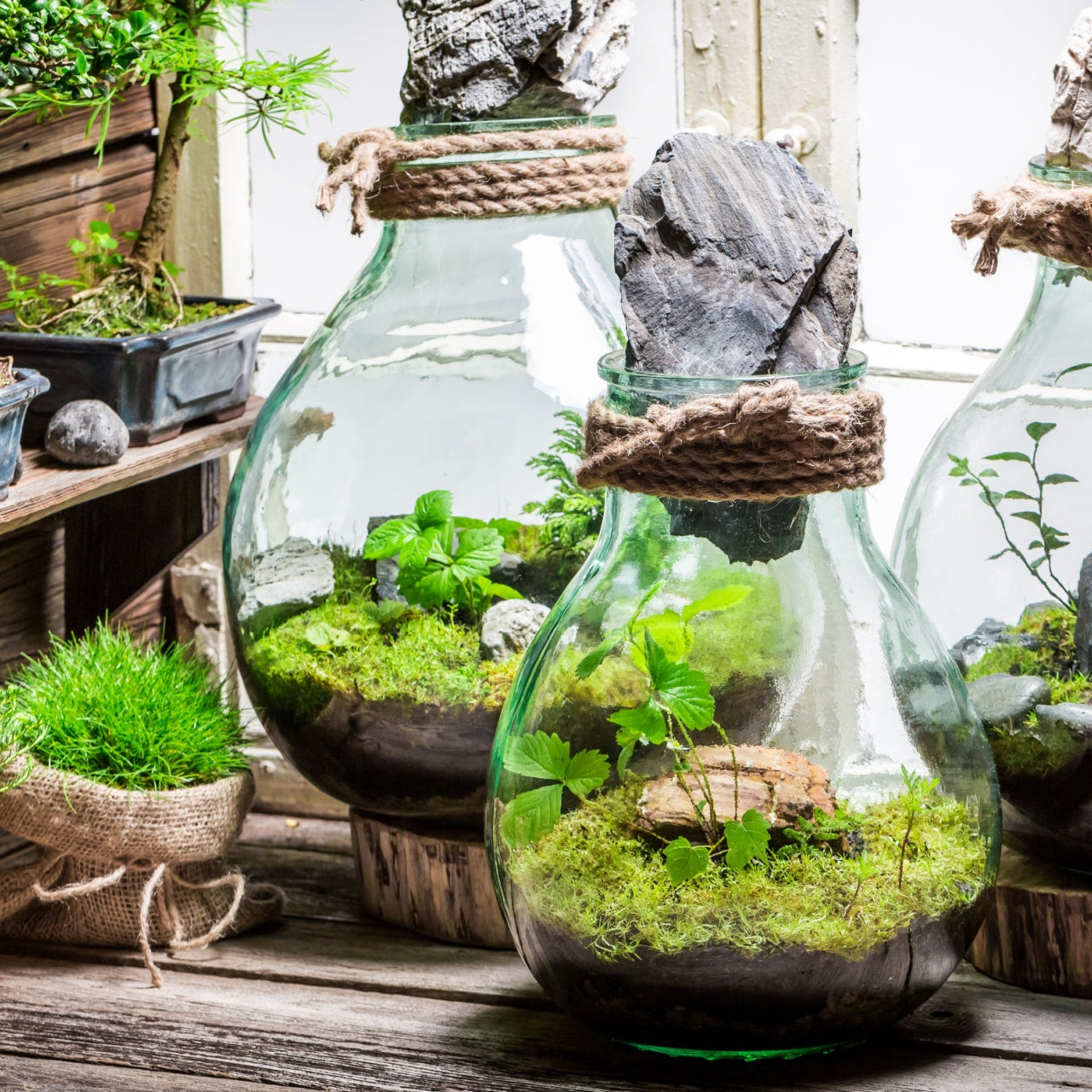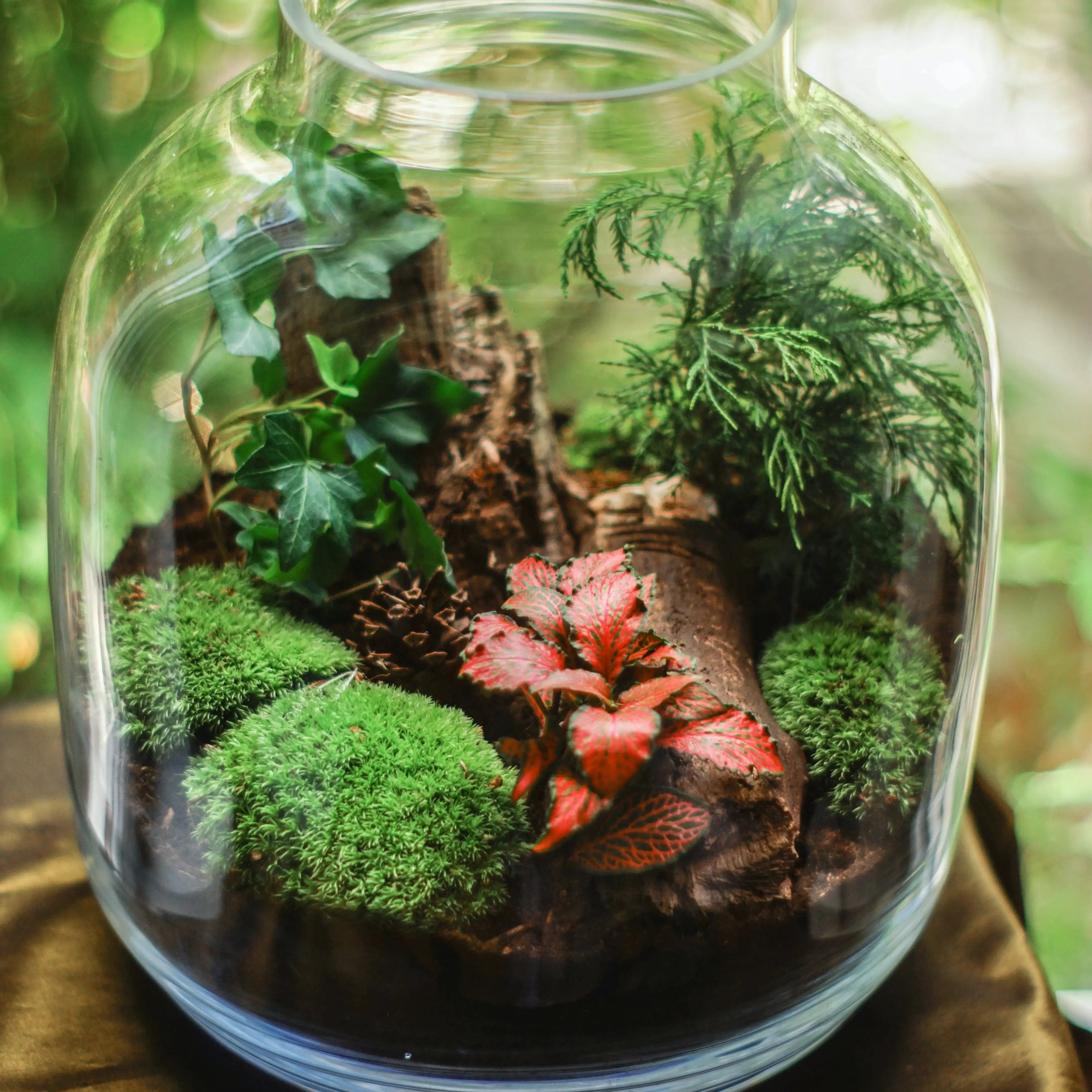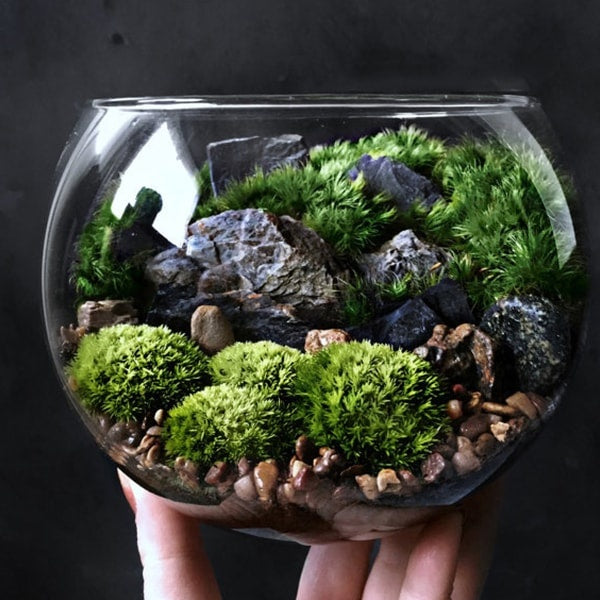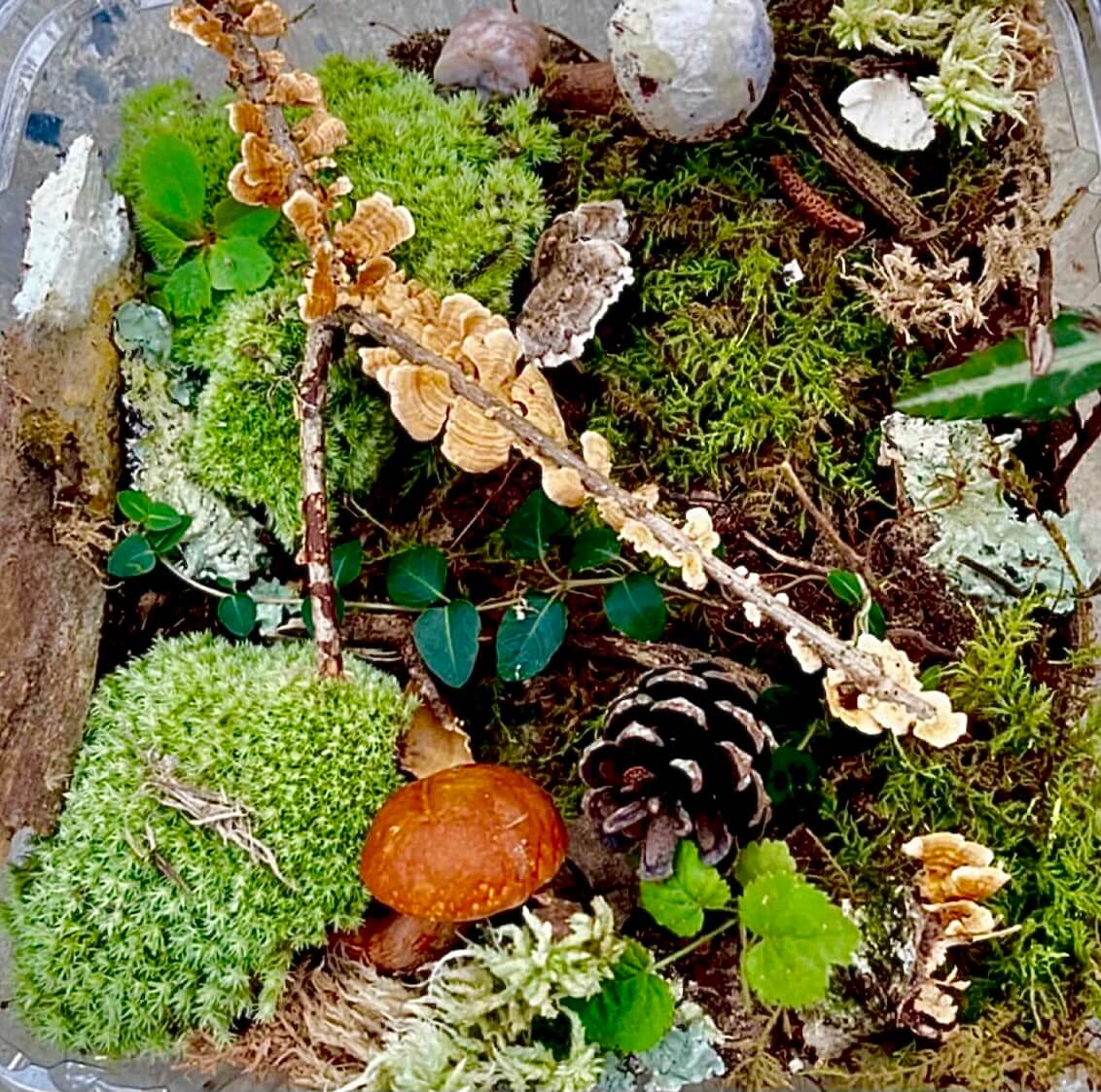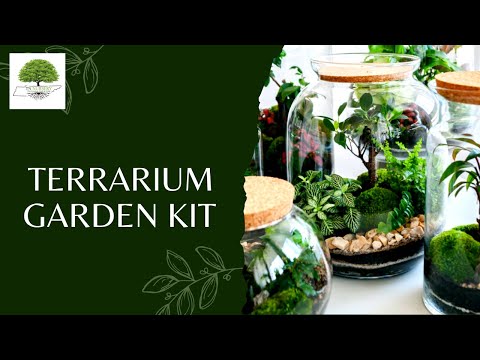Terrarium Plants For Sale
Our Terrarium plant kit is a collected live sampler kit of lichens, mosses, and plants found deep in the woods in the Tennessee mountains. Bailey takes great pride in collecting each fresh and shipping it directly to your home or office. These are not prefab kits; they are real live plants in these kits derived from the forest floor, where reptiles live. She sees lizards, frogs, and often a small turtle while collecting these terrarium kits.
Have you ever been hiking along creeks and forest trails, marveling at the little wonders around you (fun mushrooms, soft mosses, cool rocks, etc.) and wished you could capture the forest treasures and take them home?
Terrarium Plant Kits are Perfect For Reptiles and Amphibians
TN Nursery offers the Terrarium Plant Kit to help you build and capture the magic of these memories for your own home or space. Made with wild-caught, local items, this kit is complete with all the organic wonders a micro-environment needs: a mix of lichens, varieties of fresh living moss, mushrooms (such as Turkey Tail), rocks, and small groundcovers.
Everyone loves Bailey's terrarium plant kits. She's never had any complaints, even with one, and sells hundreds of them yearly. Please be considerate and only order three or fewer because she works long hours in the office and warehouse and gets these in her spare time or on lunch break. She does this for a hobby and loves it, so please, do not be surprised if we refund you and cancel your order if there are a lot of orders for them. She tries to fulfill every order but sometimes gets overwhelmed, especially in Spring when it's very busy.
Terrarium Plant Kit Requirements
Because this terrarium will contain living mosses, it is crucial to maintain high humidity levels. Avoid leaving it in direct sunlight, as this can hinder the growth of the plants by increasing the temperature too much. Just keep the environment moist and watch how little critters love their new habitat.
Terrarium Plant Kit Instructions and Maintenance
This Terrarium Plant Kit is complete with all living components needed, but the container and substrate are not included. To contain the living masterpiece, seek a sealed glass container to maintain the necessary humidity to keep the ecosystem self-sufficient. Even a recycled jar works wonderfully! Place a small layer of pebbles or rocks at the bottom of the container to allow for healthy drainage and prevent waterlogging. On top of that, put a small layer of peat or sphagnum moss.
Add a small layer of soil, and then you are free to add living mosses and all the other living components of your kit! Decorate with small stones, twigs, or whatever else tickles your fancy - this is your micro-habitat to customize and enjoy. Be sure to give a healthy misting before sealing.
Noteworthy Characteristics
Enjoy a mini oasis on your desk or any other space you want to breathe life into. Please limit your order to five kits, as our staff specially and thoughtfully makes these. The Terrarium Plant Kit is limited in quantity, so order yours today!
We create with intention. Our products solve real problems with clean design and honest materials.
Exposure
Terrarium Plant Kits thrive in bright, indirect light. Evade explicit sunlight, as it can scorch the plants inside the terrarium. A spot near a window with filtered light or in a room with plenty of ambient light is ideal.
Height at Maturity
Usage
Decor
Shipped As
Bare-root
Ships
Planting Zones
3-9
How To Grow & Care Tips
How to Grow and Care for Specialty Plants for Specific Causes
Specialty plants serve meaningful purposes beyond beauty—whether it's attracting pollinators, repelling pests, preventing erosion, feeding wildlife, or creating habitat. To grow them successfully, start by understanding the specific goal of your planting. For example, milkweed and bee balm are best for pollinator gardens, while vetiver and creeping juniper are ideal for erosion control. Choose plants that are well-suited to your USDA zone, soil type, and light conditions to ensure long-term success.
Prepare the soil by enriching it with compost and ensuring good drainage. Plant during the recommended season—usually early spring or fall—and space according to mature size to prevent overcrowding. Water regularly during the first growing season to help roots establish, then reduce frequency once the plants are settled. Mulching helps conserve moisture and keeps weeds at bay.
Minimal pruning and occasional fertilizing will keep most specialty plants healthy. Whether you’re supporting bees, deterring deer, or stabilizing a hillside, these plants are powerful tools in building a purpose-driven, eco-friendly garden.
